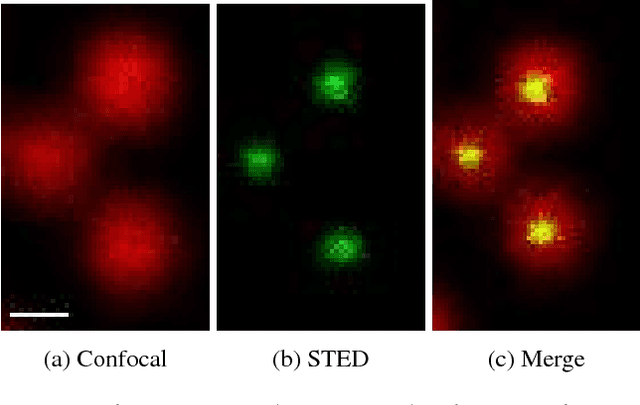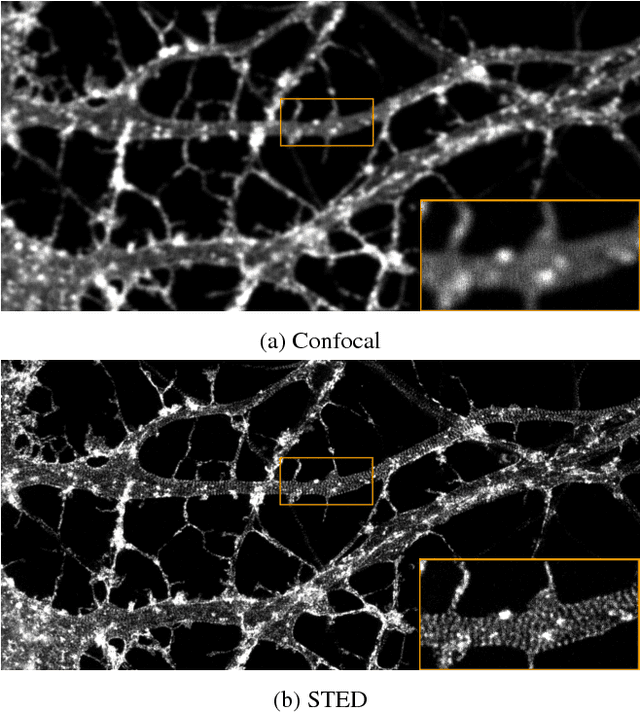Flavie Lavoie-Cardinal
Filtering Pixel Latent Variables for Unmixing Volumetric Images
Dec 08, 2023Abstract:Measurements of different overlapping components require robust unmixing algorithms to convert the raw multi-dimensional measurements to useful unmixed images. Such algorithms perform reliable separation of the components when the raw signal is fully resolved and contains enough information to fit curves on the raw distributions. In experimental physics, measurements are often noisy, undersampled, or unresolved spatially or spectrally. We propose a novel method where bandpass filters are applied to the latent space of a multi-dimensional convolutional neural network to separate the overlapping signal components and extract each of their relative contributions. Simultaneously processing all dimensions with multi-dimensional convolution kernels empowers the network to combine the information from adjacent pixels and time- or spectral-bins, facilitating component separation in instances where individual pixels lack well-resolved information. We demonstrate the applicability of the method to real experimental physics problems using fluorescence lifetime microscopy and mode decomposition in optical fibers as test cases. The successful application of our approach to these two distinct experimental cases, characterized by different measured distributions, highlights the versatility of our approach in addressing a wide array of imaging tasks.
Learning to Become an Expert: Deep Networks Applied To Super-Resolution Microscopy
Mar 28, 2018



Abstract:With super-resolution optical microscopy, it is now possible to observe molecular interactions in living cells. The obtained images have a very high spatial precision but their overall quality can vary a lot depending on the structure of interest and the imaging parameters. Moreover, evaluating this quality is often difficult for non-expert users. In this work, we tackle the problem of learning the quality function of super- resolution images from scores provided by experts. More specifically, we are proposing a system based on a deep neural network that can provide a quantitative quality measure of a STED image of neuronal structures given as input. We conduct a user study in order to evaluate the quality of the predictions of the neural network against those of a human expert. Results show the potential while highlighting some of the limits of the proposed approach.
 Add to Chrome
Add to Chrome Add to Firefox
Add to Firefox Add to Edge
Add to Edge